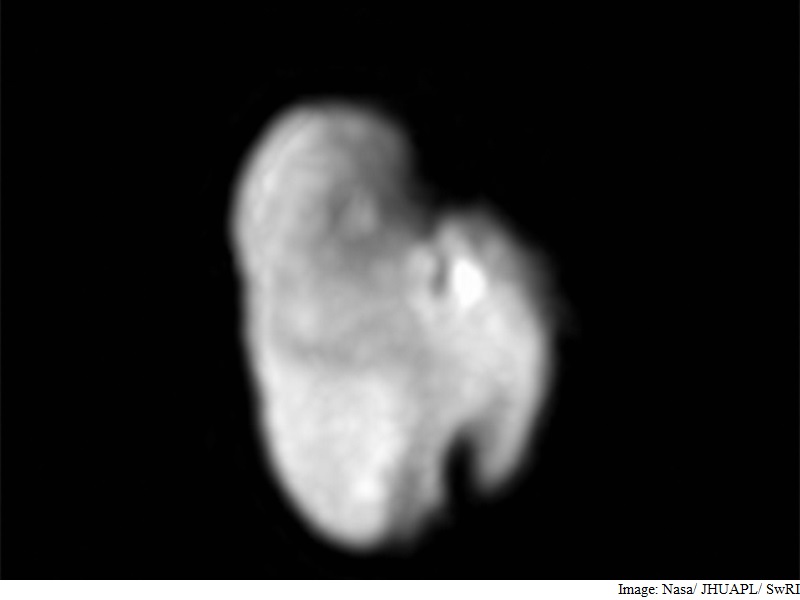- Home
- Science
- Science News
- Nasa's New Horizons Probe Spots Pristine Water Ice on Pluto Moon Hydra
Nasa's New Horizons Probe Spots Pristine Water Ice on Pluto Moon Hydra

The Hydra spectrum is similar to that of Pluto's largest moon, Charon, which is also dominated by crystalline water ice.
But Hydra's water-ice absorption bands are even deeper than Charon's, suggesting that ice grains on Hydra's surface are larger or reflect more light at certain angles than the grains on Charon.
Pluto's outermost small moon, Hydra is thought to have formed in an icy debris disk some four billion years ago.
Mission scientists are investigating why Hydra's ice seems to be cleaner than Charon's.
"Perhaps micrometeorite impacts continually refresh the surface of Hydra by blasting off contaminants," said Simon Porter, New Horizons science team member from Southwest Research Institute in Boulder, Colorado.
"This process would have been ineffective on the much larger Charon, whose much stronger gravity retains any debris created by these impacts," he added in a Nasa statement.
The New Horizons science team is looking forward to obtaining similar spectra of Pluto's other small moons, for comparison to Hydra and Charon.
The new data was gathered by New Horizons from a distance of 240,000 km on July 14 last year.
For the latest tech news and reviews, follow Gadgets 360 on X, Facebook, WhatsApp, Threads and Google News. For the latest videos on gadgets and tech, subscribe to our YouTube channel. If you want to know everything about top influencers, follow our in-house Who'sThat360 on Instagram and YouTube.
Related Stories
- Samsung Galaxy Unpacked 2025
- ChatGPT
- Redmi Note 14 Pro+
- iPhone 16
- Apple Vision Pro
- Oneplus 12
- OnePlus Nord CE 3 Lite 5G
- iPhone 13
- Xiaomi 14 Pro
- Oppo Find N3
- Tecno Spark Go (2023)
- Realme V30
- Best Phones Under 25000
- Samsung Galaxy S24 Series
- Cryptocurrency
- iQoo 12
- Samsung Galaxy S24 Ultra
- Giottus
- Samsung Galaxy Z Flip 5
- Apple 'Scary Fast'
- Housefull 5
- GoPro Hero 12 Black Review
- Invincible Season 2
- JioGlass
- HD Ready TV
- Laptop Under 50000
- Smartwatch Under 10000
- Latest Mobile Phones
- Compare Phones
- Redmi Turbo 4
- Vivo Y200+
- Lava Yuva 2 5G
- OnePlus Ace 5
- OnePlus Ace 5 Pro
- Oppo A5 Pro 5G
- Vivo Y29 5G
- Honor Magic 7 RSR Porsche Design
- Asus Zenbook S 14
- MacBook Pro 16-inch (M4 Max, 2024)
- Honor Pad X9 Pro
- Honor Pad V9
- boAt Enigma Gem
- boAt Enigma Daze
- Sony 65 Inches Ultra HD (4K) LED Smart TV (KD-65X74L)
- TCL 55 Inches Ultra HD (4K) LED Smart TV (55C61B)
- Sony PlayStation 5 Pro
- Sony PlayStation 5 Slim Digital Edition
- Blue Star 1.5 Ton 3 Star Inverter Split AC (IC318DNUHC)
- Blue Star 1.5 Ton 3 Star Inverter Split AC (IA318VKU)

















